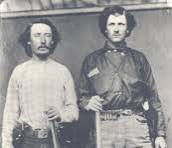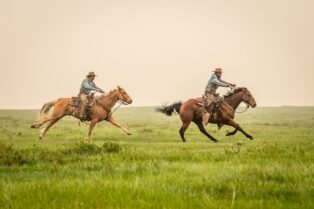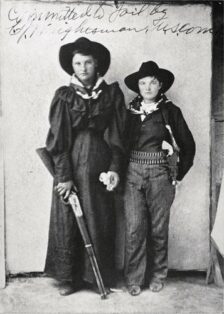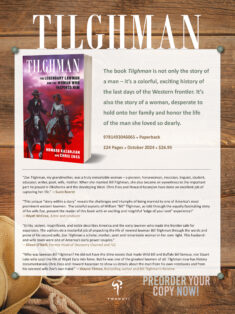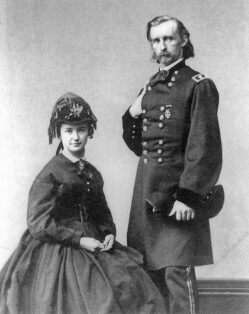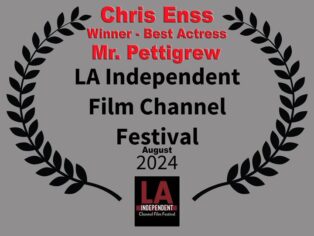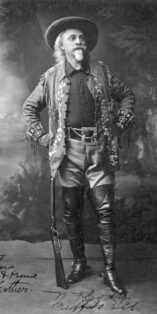Enter now to win a copy of Tilghman:
The Legendary Lawman and the Woman Who Inspired Him
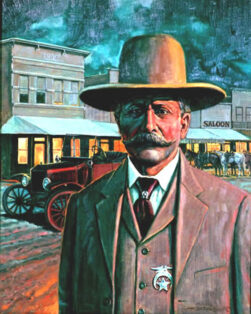
In addition to being a legendary marshal, Tilghman was a father of seven children and a faithful companion to his second wife Zoe for more than two decades. His violent death in November 1924 devastated Zoe and the three boys they had together. Tilghman had encountered numerous criminals over the course of his career and had come through the gun battles relatively unscathed.
When he took the job of bringing about stability in the untamed oil town of Cromwell, Zoe anticipated he’d take care of the work and return home to live out his days with her and their boys. She never imagined he would be gunned down in the line of duty. Now a widow at forty-three, Zoe was faced with how to continue without the man she cherished and admired. Not only would she be responsible to make sure nineteen-year-old Tench, seventeen-year-old Richard, and twelve-year-old Woodie were cared for on her own, but the debts the couple had accumulated fell solely to her to pay.
Tilghman was buried on November 5, 1924, and on November 10, 1924, creditors came calling. Zoe was the literary editor of the newspaper Harlow’s Weekly. Her salary alone would not cover the family’s needs and outstanding bills. She had been pondering the situation for weeks, in between reading Tilghman’s detailed memoirs of the various manhunts, posse rides, shootouts, and arrests in which he participated over the course of his life as a sheriff or marshal. She reviewed with considerable pride the newspaper clippings he had kept about the outlaws he apprehended.
Although he’d stayed on the job longer than any of his colleagues and squared off against more renegades than lawmen such as James Butler Hickok, Seth Bullock, or Virgil Earp, Tilghman’s name wasn’t as recognizable as most of the others in the field. Among the correspondence Zoe had received from men and women expressing their sorrow over Tilghman’s death were newspaper articles about Wyatt Earp’s work in motion pictures, his friendship with film star William S. Hart, and the biography in the works about the lawman and his gunfighter life. Zoe had never personally met Earp but knew of him from her husband.
She believed Tilghman’s experiences were at least as daring and exciting as anything Wyatt Earp had done, and spanned a far greater number of years. The idea to write a book about Tilghman’s adventures wearing a badge began forming in Zoe’s mind a month after his passing and was rekindled after reading of a possible volume on Earp. She was convinced readers would appreciate the tales of Marshal Tilghman’s efforts to tame the territory beyond the Mississippi.
According to Zoe, “My husband was one of the West’s greatest peace officers. He hunted down famous outlaws and killed when he had to. But Tilghman was more than an expert gunman who fought on the side of the law. He and other men who held dangerous jobs as sheriffs and marshals did the work of civilization along the whole frontier.”
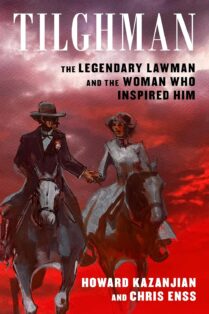
Tilghman
I'm looking forward to hearing from you! Please fill out this form and I will get in touch with you if you are the winner.
Join my email news list to enter the giveaway.
"*" indicates required fields
To learn more about Zoe Tilghman and her husband read
Tilghman: The Legendary Lawman and the Woman Who Inspired Him

